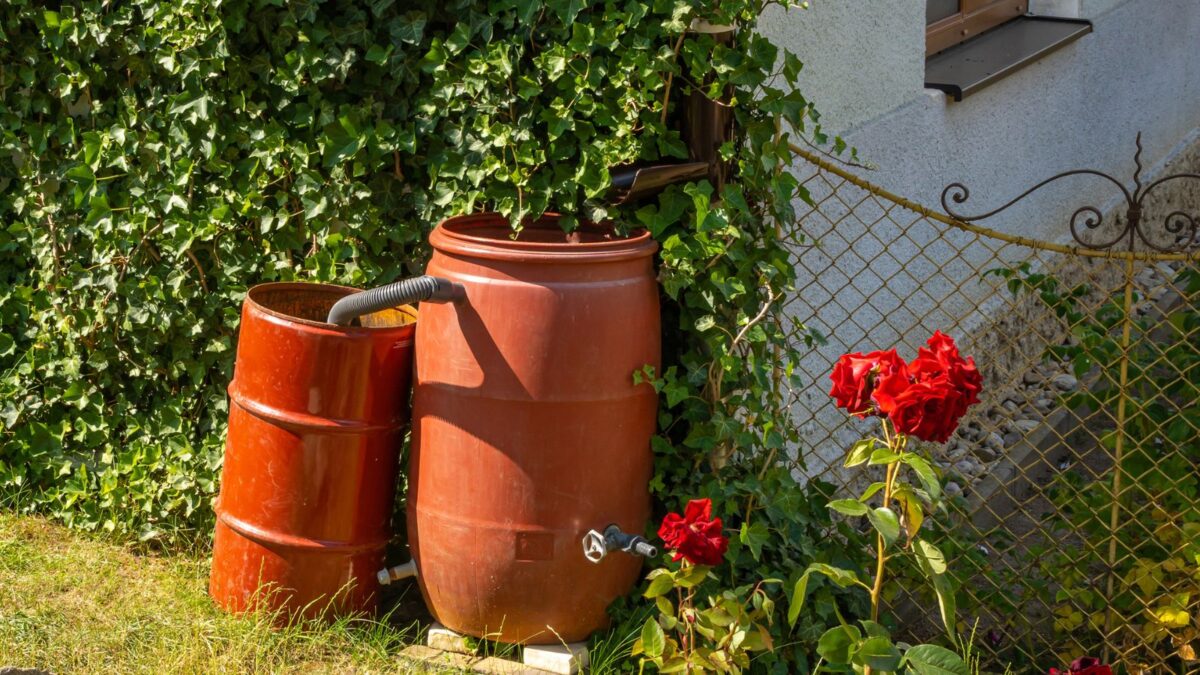Often seen as a hobby of the green-thumbed, gardening brings so much joy to so many families. You can create a thriving garden with a little creativity while spending little to no money. Here are some of the most frugal gardening hacks, crowdsourced from the passionate gardeners following my Facebook page.

1. Grow From Seeds or Cuttings

One of the most economical ways to garden is to start from seeds rather than purchasing plants. Seed packets are inexpensive, especially if bought from discount stores, or even better, saved from last year’s harvest.
Swapping seeds with friends or joining community garden groups to exchange seeds can also keep your costs low. Even dried beans from grocery stores can sprout into new plants – an inexpensive hack with high returns.
You can also grow from cuttings. Ask family and friends for a few cuttings from their roses, hydrangeas, lavender, basil, and many other flowers and herbs. You can even take tomato cuttings (when your neighbors prune theirs) and grow way more tomato plants than you could buy.
Here are 19 easy plants you can grow from cuttings.
2. Save Seeds and Reuse Containers

Saving seeds from last year’s plants is a game-changer for budget-conscious gardeners. Many gardeners collect seeds from flowers, fruits, and vegetables and store them in recycled containers or snack-size bags to use the following season.
Fruit containers, egg cartons, and even toilet paper rolls make excellent seed starters.
3. Compost Kitchen Scraps

Composting kitchen scraps like vegetable peelings, coffee grounds, and eggshells is an affordable way to create nutrient-rich soil. Throw them into a blender to speed up the composting process and mix directly into the garden soil.
4. Scavenge for Garden Gold

There’s no shame in being a garden scrounger! Some gardeners claim that “no bag of leaves or unattended bale of straw is safe” from them.
In some communities, after Halloween, straw bales used for decoration are discarded, which is perfect for compost or mulch. Keep an eye out on neighborhood Facebook groups or marketplaces, as people often give away extra mulch, compost, or even plants for free.
5. Rainwater and AC Drip Collection

Water is a precious resource, but you don’t have to rely solely on your tap. Collecting rainwater is a time-tested method of reducing water costs; even the condensation from your air conditioner can water your plants. Both are natural sources of water that keep your garden hydrated without increasing your water bill.
6. Repurpose and Recycle

Up-cycling everyday items into useful gardening tools is a budget-friendly approach that helps reduce waste. Gardeners use old bamboo stalks for stakes, plastic mini-blinds for plant markers, and even soda cans to grow hydroponic lettuce.
Repurposing items that might otherwise end up in landfills will also help you save money.
7. Winter Sowing in Milk Jugs

Winter sowing in milk jugs is a clever hack for those without a greenhouse. Gardeners cut them open, plant seeds inside, and leave them outside during the winter.
The jugs act like mini-greenhouses, saving you money on expensive growing equipment. And yes, even when temperatures drop below freezing, those seeds are safe in their little plastic shelters!
Learn more about winter sowing.
8. Mulching With Cardboard and Free Leaves

For mulching and weed control, many gardeners layer cardboard in their garden beds and cover it with leaves, grass clippings, or other free organic materials. Cardboard suppresses weeds and improves soil quality over time.
Many gardeners collect leaves from their own yards or even from neighbors to use as mulch. Leaf mulch improves soil structure and helps retain moisture; best of all, it’s free!
Some lawn care services will even drop off large amounts of leaves at no cost. It’s an excellent way to cover large garden beds without using costly wood chips or store-bought mulch.
9. Community and Plant Swaps

Being part of a gardening community is a great way to exchange plants, seeds, and knowledge. Gardeners often swap cuttings, young plants, and divided perennials, creating a thriving ecosystem of free or low-cost plants.
Local plant swaps or gardening groups are treasure troves of new plants and gardening tips.
10. Aquarium Water and Kitchen Scraps as Fertilizer

If you have an aquarium, don’t throw away the water after cleaning it. Use this nutrient-rich water to feed your plants.
Kitchen scraps like banana peels, coffee grounds, and eggshells can also be used as fertilizer. Simply blend the banana peels with water or scatter coffee grounds and eggshells directly into your garden for an inexpensive nutrient boost.
11. Creative Plant Markers

Don’t waste money on fancy plant markers or support stakes. Recycled materials like chopsticks, old mini-blinds, and even broken branches from your yard can be used to label or support your plants. Some gardeners even pick up discarded bamboo or wood from neighbors to use for staking plants.
More Ways to Save Money in The Garden

The above are just a few ways to save in the garden. There are many more ideas you can try. Here are just a few more:
- grow perennials: they come back year after year without the need to spend money on new plants
- buy gardening tools form estate or yard sales
- ask the local tree service company to dump wood chips on your property
- shop the garden sales at the end of the season
- make weed tea to use as fertilizer
- attract beneficial insects and pollinators (a simple pack of wildflower seed will do wonders)
- learn to preserve your harvest when the garden is in full swing, so you can use later when the cooler weather arrives.
Gardening doesn’t have to break the bank. With a bit of ingenuity and a community of like-minded gardeners, you can find many ways to create a lush garden on a shoestring budget. By growing from seeds, reusing materials, composting, and connecting with others, you’ll be able to save money and enjoy the rewarding experience of a thriving garden.


